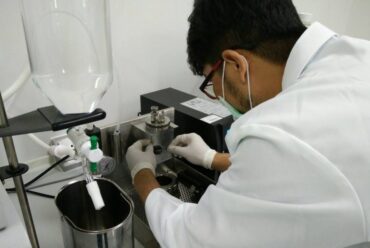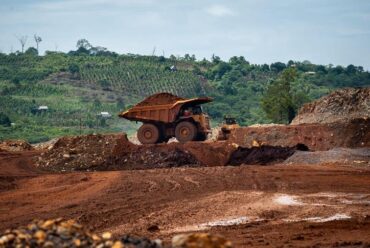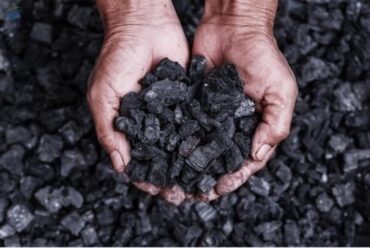Mining Industry Indonesia: Prospects, Challenges and the Future
Since colonial times, the mining industry Indonesia has played a vital role in the country’s economy. Indonesia is famous for its various mining commodities which are its mainstay. Coal, petroleum, natural gas, nickel and gold are some of the many natural resources that are exploited.
This diversity makes Indonesia one of the leading producers and exporters in the world. This article will discuss historical developments, positive and negative impacts, policies, innovations and future prospects for the Indonesian mining industry.
HISTORY AND DEVELOPMENT OF THE MINING INDUSTRY INDONESIAN
The mining industry Indonesian has a rich history and significant development from colonial times to the modern era.
Since the Dutch colonial period, Indonesia’s natural wealth, including mineral and fuel mines, has been a major concern. The following is a brief overview of the history and development of the Indonesian mining industry:
THE DUTCH COLONIAL ERA
The development of the Indonesian mining industry began during the Dutch colonial period in the 19th century. The Dutch took advantage of Indonesia’s natural wealth, especially tin mines in Bangka-Belitung and coal in Sumatra. However, mining activities during this period were still dominated by foreign parties, and the resulting economic benefits were not fully enjoyed by local communities.
POST INDONESIAN INDEPENDENCE
After Indonesian independence in 1945, the government began to take full control of the mining sector. In the following decades, the main focus was the development of coal, oil and nickel mines.
The government runs mining operations through state companies, such as Pertamina and Bukit Asam, to increase control and economic benefits.
NEW ORDER ERA
During the New Order government, there was a significant increase in foreign investment in the mining industry. In an effort to increase economic growth, the government is opening itself to foreign investment, especially in the oil and gas sector.
This brought in foreign technology and capital, but also caused some controversy regarding the use of natural resources and the rights of local communities.
POSITIVE AND NEGATIVE IMPACT OF MINING IN INDONESIA
POSITIVE IMPACT ON ECONOMIC GROWTH AND DEVELOPMENT
The mining industry makes a major contribution to Indonesia’s economic growth. State revenues from exports of mining commodities such as coal, petroleum and tin are the main pillars in infrastructure development and social programs. Job creation is also a significant positive impact.
NEGATIVE IMPACT ON ENVIRONMENTAL, SOCIAL AND PUBLIC HEALTH
Even though it has a positive economic impact, the mining industry also has serious negative impacts. Deforestation, water pollution and social conflict are often related to mining activities. The health of communities around mines is also a serious concern, especially due to the resulting air and water pollution.
MINING POLICIES AND REGULATIONS IN INDONESIA
mining industry Indonesia is governed by a series of policies and regulations to manage its abundant natural resources wisely.
In an effort to achieve sustainable mining and provide maximum benefits to society, the Indonesian government has implemented various regulations governing operational, environmental and social aspects of this industry.
1. MINERAL LAW
The Minerba Law, or Law Number 4 of 2009 concerning Mineral and Coal Mining, is the main legal basis that regulates all mining activities in Indonesia.
This law establishes the principles of sustainable management of mineral and coal resources and provides the basis for empowering local communities.
2. MINING LICENSING
The mining licensing process is strictly regulated by the government. Mining companies are required to obtain a mining business permit (IUP) before starting their operational activities.
The government also sets various technical, financial and environmental requirements that must be met by companies in order to obtain this permit.
3. OBLIGATIONS OF THE LICENSE HOLDER
License holders are required to comply with the obligations stipulated in the Mining Law. This involves environmental responsibility, involvement of local communities, and regular reporting on production and finances. Violation of this obligation may result in revocation of the permit by the government.
4. TAXES AND MINING ROYALTIES
The government imposes taxes and royalties on mining activities to increase state revenues. The amount of taxes and royalties can be adjusted based on the type of mineral or coal mined.
The government is trying to ensure that profits from these natural resources can make a maximum contribution to national development.
5. COMMUNITY PARTICIPATION AND CSR
The policy of community participation (stakeholders) in decision making is important for minimizing social conflict. Permit holders are required to involve local communities in the planning and implementation process of mining activities.
In addition, Corporate Social Responsibility (CSR) programs are mandatory to ensure social benefits for communities around mining locations.
6. ENVIRONMENTAL MANAGEMENT AND RECLAMATION
The government sets strict standards regarding environmental management and reclamation of ex-mining land.
Mining companies are required to prepare reclamation plans and rehabilitate mining areas after completion of use. The goal is to minimize long-term environmental impacts and return the land to its original or better condition.
Read also: History of Indonesian Nickel Mining
INNOVATION AND LATEST TECHNOLOGY IN MINING
The mining industry in Indonesia continues to undergo transformation through the adoption of innovation and the latest technology to enhance efficiency, sustainability, and safety.
These various developments bring positive impacts in addressing the challenges faced by the mining industry in the modern era. Here are some of the latest innovations and technologies enriching the landscape of the Indonesian mining industry:
1. AUTOMATION TECHNOLOGY
The implementation of automation technology has been a significant milestone in the mining industry. Mining equipment equipped with automatic control systems can enhance productivity and reduce the risk of accidents. These systems allow mining operations to run more efficiently and safely.
2. INTERNET OF THINGS (IOT)
The utilization of the Internet of Things (IoT) enables real-time data collection from various mining equipment.
Sensors installed on equipment and mining infrastructure can provide accurate information regarding performance, equipment conditions, and environmental conditions. This aids in better operational planning and preventive maintenance.
3. MINING MODELING AND SIMULATION
Modeling and simulation technology allow mining companies to plan and optimize their operations before fully committing resources. By using digital models, companies can identify potential issues, optimize mine designs, and enhance extraction efficiency.
4. DRONE TECHNOLOGY
The use of drone technology has revolutionized mining monitoring and mapping. Drones can be used for quick and accurate aerial surveys, environmental monitoring, and mining equipment inspections.
This not only improves efficiency but also reduces the risk of accidents that can occur during manual inspections.
5. UTILIZATION OF BIG DATA AND PREDICTIVE ANALYTICS
Big Data and predictive analytics provide the ability to analyze large datasets generated by mining operations.
By using intelligent algorithms, companies can make predictions regarding operational performance, equipment maintenance, and even identify potential new mines more accurately.
6. IMPLEMENTATION OF ENVIRONMENTALLY FRIENDLY TECHNOLOGY
The mining industry is increasingly paying attention to environmental impact. Environmentally friendly technologies such as the use of renewable energy, more efficient processing technology, and sustainable mining practices are the primary focus. This aligns with efforts to minimize negative impacts on the environment.
CONCLUSION
The mining industry plays a crucial role in driving Indonesia’s economic growth, but the negative impacts on the environment and society must be addressed seriously. Effective policies and regulations, along with technological innovations, are key to facing future challenges. Through a balanced approach, Indonesia can ensure that the mining industry provides maximum benefits for the country and its people.







